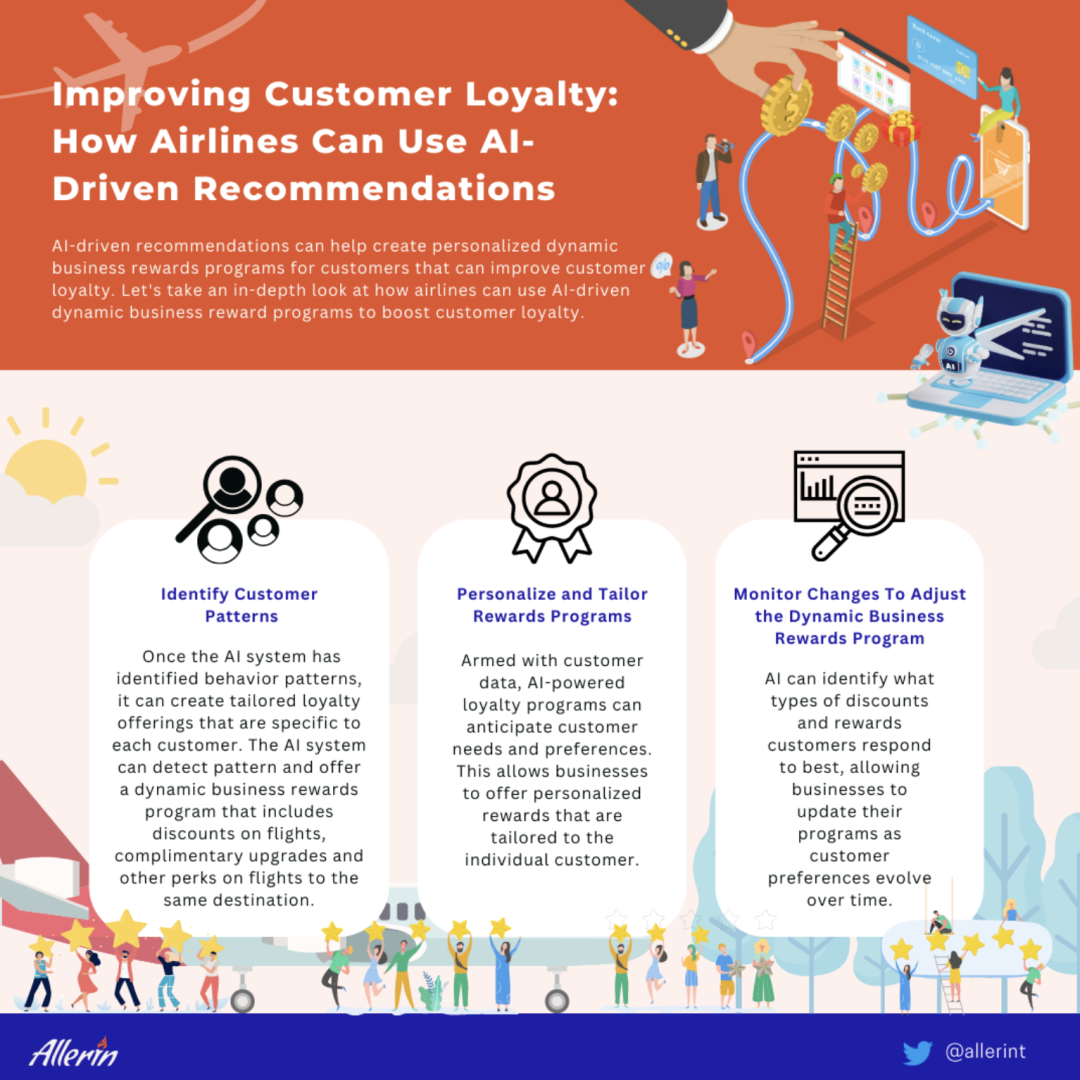Personalize and Tailor Rewards Programs
Armed with customer data, AI-powered loyalty programs can anticipate customer needs and preferences. This allows businesses to offer personalized rewards that are tailored to the individual customer.
For example, AI can detect customers who have recently purchased a product and offer discounts for accessories that complement their purchase. It can also recognize when a customer visits a certain destination frequently and offer discounts on flights or accommodations.
Monitor Changes to Adjust the Dynamic Business Rewards Program
AI can monitor changes in customer behavior and adjust rewards programs accordingly. This helps businesses stay competitive and offer customers suitable rewards that will encourage them to return. AI can identify what types of discounts and rewards customers respond to best, allowing businesses to update their programs as customer preferences evolve over time.
Additionally, AI can detect changing patterns in customer spending and provide personalized rewards based on individual needs. This could mean offering customers discounts on specific products, services, or even flights or accommodations, based on the customer’s current and predicted spending patterns.
Conclusion
Given the rise of digital technology and changing dynamics of customer loyalty, AI-driven dynamic business rewards programs have become increasingly important for airlines that want to stay competitive. With this powerful tool at their disposal, companies can build relationships with customers by providing tailored incentives that will keep them coming back repeatedly – something that every airline wants! Airline companies should, therefore, implement AI-based solutions and reap the benefits in terms of customer loyalty and increased revenue at the earliest.



















